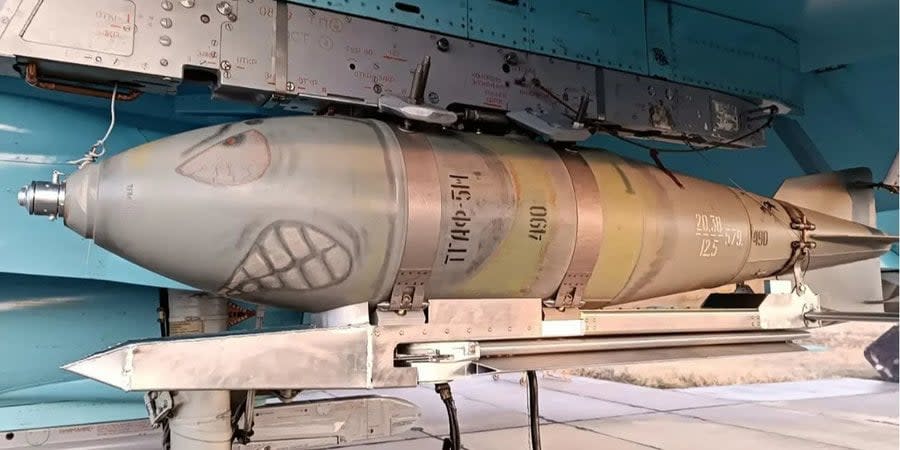How Russian aerial bombs shape the battlefield in Ukraine + infographic

- Oops!Something went wrong.Please try again later.
Russian guided aerial bombs (KABs or planning bombs) are now the main tool of Russian terror and their main trump card in Ukraine, said Ukrainian President Volodymyr Zelenskyy in his evening address on May 22.
"The main tool of Russian terror and the occupier's advancement," Zelenskyy labeled the guided bombs during a special meeting of the National Security and Defense Council and the Commander-in-Chief's Staff, focusing on Ukraine’s defense capabilities against such threats.
Read also: Russians strike village in Kharkiv Oblast with guided aviabomb, three people wounded
Despite advancements in electronic warfare, drones, and missile programs, Zelenskyy emphasized the need for further measures: "There are no alternatives - Ukraine needs systems and tactics that will allow us to defend our positions, our cities, and communities from these bombs."
Russian forces have ramped up their use of KABs, particularly since late 2023, employing them in significant numbers on the eastern frontline and in a new offensive north of Kharkiv Oblast. These munitions played a pivotal role in Russia's capture of Avdiivka, highlighting their strategic impact.
Read also: Russia launches 300+ missiles, 3,200 bombs in April, says Volodymyr Zelenskyy
Most commonly, Russia utilizes Soviet-era FAB-500 bombs modified with additional equipment to transition from unguided "dumb" munitions to "smart" guided ones. "These are Soviet-era guided aircraft bombs that are equipped with wings and fly to a GPS navigation target," explained former Air Force spokesman Yuriy Ihnat. He noted that these bombs allow Russian jets to launch from safe distances, avoiding direct engagement with Ukrainian air defenses.
Read also: Explosions rock Kharkiv as Russia strikes it with guided aerial bombs, one person reported dead
The bombs typically have a strike range of about 50-55 km, effectively out of reach for most Ukrainian medium-range surface-to-air missile systems, such as the Buk or Tor, which have ranges of 30-40 km. The primary launch platforms for these KABs are the Russian Su-34 and Su-35 aircraft.
There are two main types of these munitions:
Conventional bombs modified with guidance kits: Older bombs like the FAB-250, FAB-500, and FAB-1500 are fitted with universal planning and correction modules (UPCMs) to enhance their range and accuracy. Ukrainian military analysts have noted that the accuracy of a FAB-500 bomb is typically within 8 meters, but it averages about 15 meters. The largest of these, the FAB-1500-based glide bombs, are especially dangerous, capable of creating craters 20-25 meters long and 6 meters deep, with severe damage radii extending up to 70 meters.
Factory-made advanced guided bombs: These newer KABs are designed from the outset as glide projectiles, featuring higher accuracy and hence are more expensive and less common. Notable among these is the UPAB-1500 V, first used in Ukraine in March 2023, which is capable of striking highly protected targets from 40 kilometers away, and the D-30SN UMPB, introduced in March 2024, which can be launched from both aircraft and ground-based systems like the Tornado-S and Smerch MLRS.
These developments underscore the evolving threat of Russian aerial munitions in the conflict, prompting urgent responses from Ukrainian military strategists.
Read also: Russia destroys school in frontline town Beryslav in Kherson Oblast
We’re bringing the voice of Ukraine to the world. Support us with a one-time donation, or become a Patron!
Read the original article on The New Voice of Ukraine

